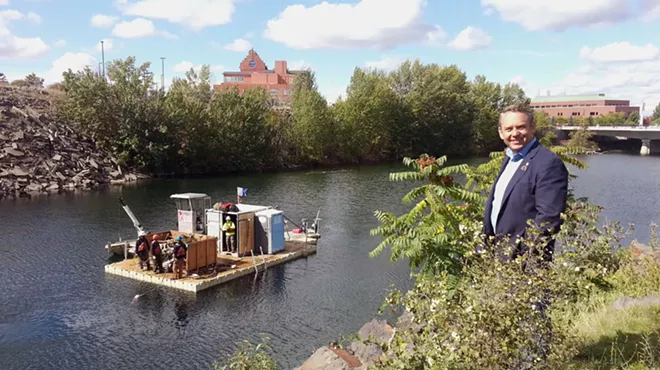Spokane wastewater workers will begin searching out the sources of cancer-causing pollutants that wash into the Spokane River as part of the city’s agreement with the Spokane Riverkeeper.
The City Council voted 5-1 Monday night to approve a $175,000 settlement that avoids a possible lawsuit, threatened in late 2009, over the city’s failure to clean up PCBs, which are present in the river in high levels within city limits.
“This is one of the rare cases were the city came to the table and said, ‘Let’s talk and figure out a solution,’” says Michael Chappell of the Gonzaga Environmental Law Clinic, which was involved in the suit. “There was a lot of back-and-forth and we’ve come up with a process that we think is Step One in reducing the amounts of PCBs.”
The settlement, says Assistant City Attorney Carrie Holtan, “has a variety of components. The whole idea was to respond to, and collaborate with, the Center for Justice and Riverkeeper, and prepare a package where both parties really benefit.”
The settlement pays $125,000 to the Rose Foundation to fund water-quality improvement grants. The Riverkeeper is prohibited from involvement in this so as not to appear to benefit from the suit, Holtan says.
“This is not some windfall for us. The money is made available to deal with other water-quality issues,” adds Center for Justice attorney Rick Eichstaedt.
Another $10,000 will go to Spokane River Forum for educational materials, and $38,000 for costs and legal fees to Gonzaga’s Environmental Law Clinic.
But the main thrust of the agreement is that the city will begin immediately to address the two stormwater basins that have shown the highest levels of PCBs.
"The city came to the table and said,'Let's talk and figure out a solution.'"
- Michael Chappel
Gonzaga Environmental Law Clinic
These networks of stormwater and combined-sewer overflow pipes empty into the river near Trent and Hamilton, bearing runoff from an extensive industrial area of the city.
The state Department of Ecology’s Urban Waters team ran a project in these two basins in 2009 and discovered PCBs from previous industrial uses are still coating the soils at old factory sites and drift into catch basins and vaults of the stormwater runoff pipes. From there, the toxins flow into the river.
PCBs, a carcinogen, then wind up in the fatty tissue of fish. Levels are high enough that the Spokane Regional Health District has for years posted warning signs along the river about limiting fish consumption.
PCBs — or polychlorinated biphenols — are impossibly tiny and a highly toxic residue from America’s industrial past that never really decompose, which means they are spread pretty much everywhere. They were created in a lab in 1929 and soon became a sort of wonder compound that was used as a coolant in electrical transformers and hydraulic systems, but were also present in a wide variety of consumer products.
They were among the first chemicals to be linked to cancers, and their manufacture has been banned since 1976. None have been manufactured in America since 1979.
Ecology investigators found levels of PCBs within the allowable limits of 170 parts per billion even near Kaiser and Inland Empire Paper — both known dischargers of PCBs. The levels of PCBs soar to 399 ppb between Upriver and Monroe Street dams, making the city stormwater pipes the likely culprit.
The city plan follows the path laid out by the Urban Waters team.
“They will clean out all the catch basins and sample those. If they see sediment that is hot — that has high levels of PCBs — they will work their way up the pipes to find the source,” Chappell says.


















